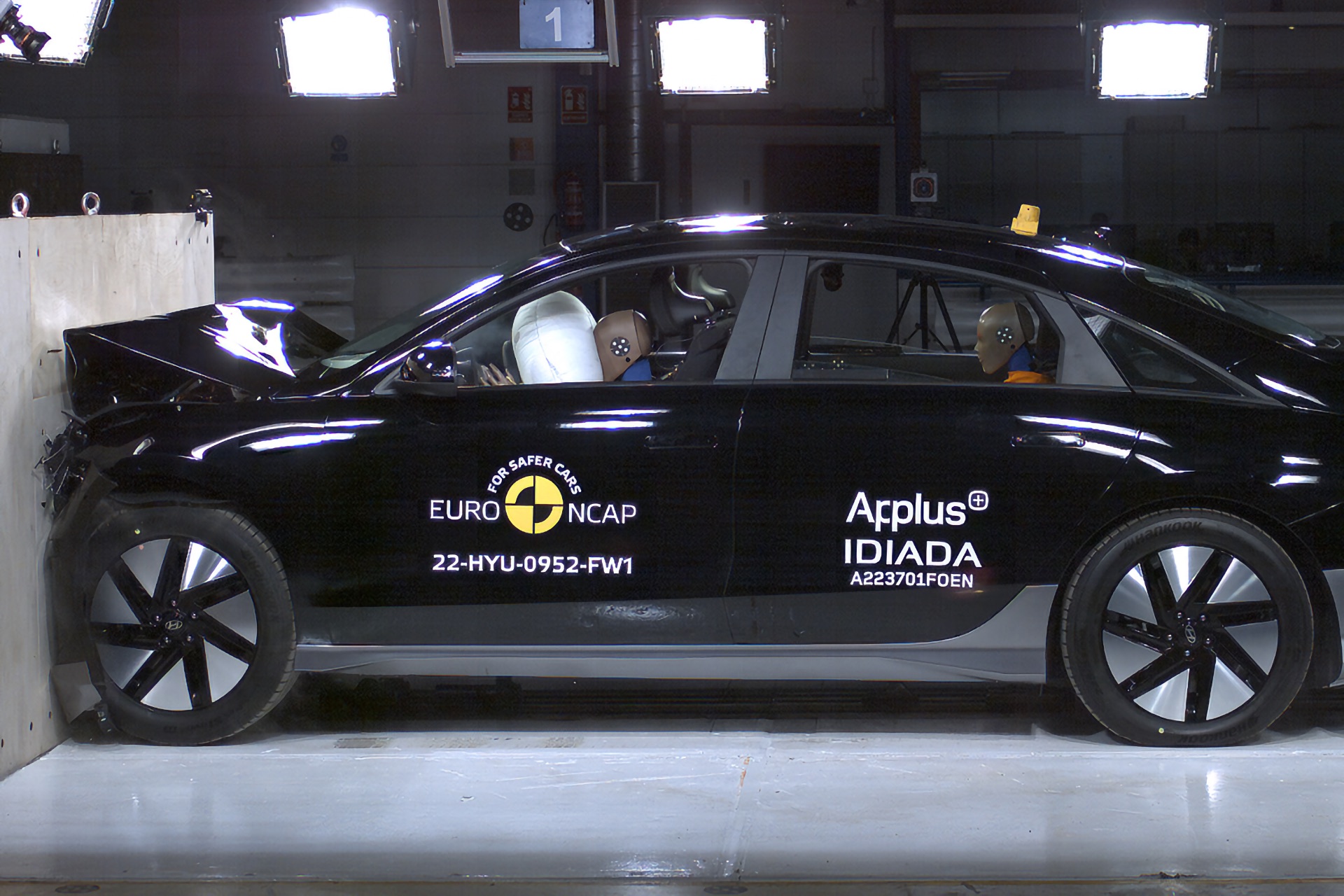ANCAP has released a five-star safety rating for the fully electric Hyundai Ioniq 6, which was introduced in Australia in February 2023. The rating applies to all variants and is based on testing of left-hand-drive models by Euro NCAP.
“As electric vehicles don’t have large engine components under the bonnet, they have the potential to pose less risk to vehicle occupants in a frontal crash scenario, compared to petrol and diesel cars,” said ANCAP Chief Executive Carla Hoorweg. “We have seen that play out in testing of the Ioniq 6 – with only a very slight penalty applied for potential injury risk to adult occupants.”
ADULT OCCUPANT PROTECTION
The passenger compartment of the Ioniq 6 remained stable in the frontal offset (MPDB) test. Dummy readings indicated adequate protection of the driver’s chest, with good protection for all other critical body regions. Good protection was offered to all critical body regions of the passenger.
The front structure presented a low risk to occupants of an oncoming vehicle in the MPDB test (which evaluates vehicle-to-vehicle compatibility), and a 0.24-point penalty was applied.
In the full width frontal test, protection was adequate for the chests of the driver and the rear passenger, while good protection was offered to all other critical body regions.
In the side impact test, protection offered to all critical body regions of the driver was good and full points were scored.
In the more severe oblique pole test, chest protection of the driver was adequate, with good protection offered to all other critical body areas.
The Ioniq 6 is equipped with a centre airbag to protect against occupant-to-occupant interaction in side impacts and it provided good protection for the head of both front seat occupants. Prevention of excursion (movement towards the other side of the vehicle) in the far side impact tests was assessed as adequate for both the vehicle-to-vehicle impact scenario and the vehicle-to-pole scenario.
CHILD OCCUPANT PROTECTION
In both the frontal offset and side impact tests, protection was good for all critical body areas for both the six-year and 10-year child dummies and maximum points were scored.
The Ioniq 6 is fitted with lower ISOFix anchorages on the rear outboard seats and top tether anchorages for all rear seating positions.
Installation of typical child restraints available in Australia showed most child restraints could be accommodated in most rear seating positions. However, one of the booster seats could not be correctly installed in the centre rear position, and one of the two selected convertible seats could not be correctly installed in rearward-facing mode using the ISOFix anchorages.
VULNERABLE ROAD USER PROTECTION
The bonnet provided weak to adequate protection to the head of a struck pedestrian over most of its surface, with poor results recorded at the base of the windscreen and on the stiff windscreen pillars.
Protection of the pelvis and legs was mixed, with areas of good to weak performance.
The autonomous emergency braking (AEB) system can detect and react to vulnerable road users such as pedestrians and cyclists. Testing of this system showed good performance in forward pedestrian test scenarios, with maximum points awarded.
The AEB back-over (reverse) system is standard on Australian models but was not fitted to the test vehicle in Europe, so AEB back over tests were not conducted. Good performance was seen in cyclist test scenarios, with collisions avoided or mitigated in most scenarios.
SAFETY ASSIST
In addition to the AEB system that can function at highway speeds, the Ioniq 6 is fitted with a lane support system (LSS) with lane keep assist and emergency lane keeping functionality, and blind spot monitoring.
Tests of its AEB (car-to-car) system showed good performance, including AEB junction assist where the test vehicle can autonomously brake to avoid crashes when turning across the path of an oncoming vehicle.
Tests of LSS functionality showed overall good performance, including in several of the more critical emergency lane keeping test scenarios.
A speed assistance system is standard. This system identifies the local speed limit and allows the driver to set the speed accordingly.
A seatbelt reminder system is fitted to all seating positions with occupancy detection available for the front passenger and rear outboard seating positions. A driver drowsiness monitor system is fitted as standard.

